Extending the quality of fresh produce has implications for marketing as well as for household consumption. We have emphasized postharvest handling of tropical fruit; however, many of the principles and practices in this series of articles also apply to fruit-bearing vegetables and leafy greens (Figure 1). We introduced the topic series in issue 154 of ECHO Development Notes (EDN) with an article on harvesting at the right time, covering principles and indicators of fruit maturity. Postharvest quality is also influenced by how fruit is handled, from the time it is harvested until it is marketed and consumed. In this article, we focus on how produce should be handled at harvest.
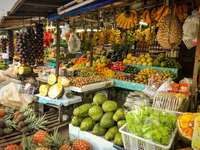
Figure 1. Diversity of fresh produce being sold at a roadside market in India. Source: Patrick Trail
Importance of careful handling
Injury and decay are leading causes of deterioration of fresh produce (Sargent et al., 2007). Forms of injury include bruising, crushing, cutting, tearing, and sunburn. Of these, bruising is the most common form of damage to fresh fruit. Damage associated with bruising can be internal and therefore not seen by harvesters in the field (McColloch, 1962). Bruising and other types of injury lead to blemishes, discoloration, tissue damage, and water loss that detract from the appearance and quality of produce.
Injuries and dead tissue are entry points for disease-causing bacteria and fungi. Given the linkage between injury and decay, these major contributors to postharvest losses can be reduced by minimizing damage of produce whenever it is handled, starting at harvest time.
Best harvest practices
Harvest with the goal of preserving the quality of produce for subsequent market sale or household consumption. Below are practices that accomplish this goal by minimizing injury and decay.
Timely harvest

Figure 2. Example of a bruised tomato (right) in comparison to an undamaged fruit (left). Source: Tim Motis
Learn to recognize indicators of fruit maturity, as discussed in EDN 154. Ensure that field workers know the proper size, shape, and color of fruit to harvest. Remember that fully ripened fruit will be softer and more prone to injury than fruit at an earlier stage of ripeness.
Harvest during the cool hours of the day to avoid heat damage. This could be early or late in the day, or even at night. If harvesting in the morning, wait until after the dew dries to slow the proliferation of moisture-loving diseases.
Careful handling
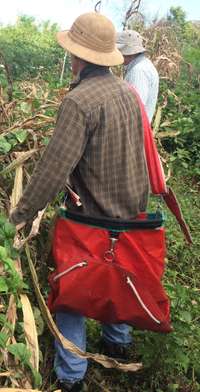
Figure 3. A harvest bag with a shoulder sling. Source: Stacy Swartz
Impact bruising results from fruit being dropped or carelessly tossed around (Figure 2). Pick fruit carefully, rather than shaking branches and letting fruit fall to the ground. Harvest bags with shoulder slings (Figure 3) can be worn by workers and used to gather fruit that are then placed into field or transport containers (FAO, 1989). Fruit in harvest bags will rub against each other while harvesters move in the field, so they are best used for fruit with firm skin like avocado (Persea americana) and citrus. Gently place harvested produce into baskets or boxes, instead of dumping produce into harvest containers.
Plan to minimize the number of times fruit is handled once harvested. The fewer number of times fruit is handled, the less likely it is to become bruised or otherwise damaged.
Proper use of harvesting containers
Compression bruising is caused by excessive weight of other fruit or objects against fruit surfaces (Hussein et al., 2020). Overfilling of large baskets, boxes, or other containers compresses fruit towards the bottom due to constant weight and pressure of the top layers. Options for alleviating this include not filling containers all the way and the use of smaller containers. Empty harvest bags frequently to keep fruit at the bottom of the bag from being damaged by the weight of fruit above them.
Use clean, well-ventilated containers with smooth sides; examples include buckets and stackable plastic crates (Kitinoja and Kader, 2015). To keep produce clean and free of disease-causing or other contaminants, do not place harvest containers on bare soil in the field or use them to store items such as food or fuel. Do not drop containers of produce while moving throughout the field or loading them into transportation vehicles. If you are using containers that stack, leave 2 to 4 cm of space at the top of each container to prevent compression of the container on fruit in a lower container.
Always arrange produce in containers in a way that prevents or mitigates potential damage. If the fruit has a stem attached to it (e.g. eggplant [Solanum melongena], pepper [Capsicum spp.], etc.), always arrange stems to face the outside of the container to avoid fruit flesh from being punctured by stems of other fruits. If a crop has hard/sturdy shoulders (e.g. tomatoes [Solanum lycopersicum] and starfruit [Averrhoa carambola]), always arrange fruit so that the weight of the fruit is on the shoulders of the fruit.
Appropriate use of harvesting methods and tools
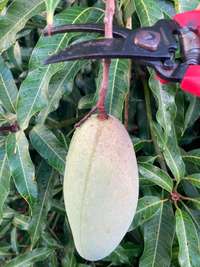
Figure 4. Use of clippers to cut the fruit stem of a mango. Source: Tim Motis
Select harvesting techniques and tools that work well for the crop and growth stage at which the crop is being harvested. Below are some examples based on an FAO (1989) document:
- No tools (Harvest Tips Video [http://edn.link/qdh6kz])
- Ripe tomatoes or passion fruit (Passiflora edulis) that easily break from the plant with the fruit stem (peduncle) still attached to the fruit can be harvested by simultaneously lifting, twisting, and pulling the fruit. Do this swiftly in a motion opposite from the natural direction of stem growth.
- Leafy crops like collard greens (Brassica oleracea [Acephala group]) may be harvested by snapping or pinching the leaves off the plant by hand. This is best done by cupping your hand above the leaves to be harvested and pushing down on the leaf base near the main stem of the plant. Do not leave parts of leaf stems attached as these will continue to pull nutrients and water from the plant.
- Pruning tools (clippers or shears) work well for crops with woody fruit stems, such as avocado, citrus, and mango (Mangifera indica). Breaking stems off the fruit can create a wound through which disease organisms can enter. Instead, cut the fruit stem about 1 to 2 cm above the fruit (Figure 4).
- Knives work well for harvesting produce with fleshy stems, like the main stems (close to the ground) of cabbage (Brassica oleracea [Capitata group]) plants. Make sure knife blades are sharp. Ease of cutting minimizes damage that would otherwise occur with dull blades.
- To remove fruit from tall trees, consider using picking poles equipped with a cutting blade and a small basket or net for collecting severed fruit (Figure 5).
Clean and disinfect tools before and after use, including ladders used for harvesting fruit trees. Sanitize cutting tools frequently by spraying them with a disinfectant like rubbing (isopropyl) alcohol. Practicing good sanitation prevents the spread of diseases that cause postharvest decay.

Figure 5. A picking pole equipped with a net for harvesting fruit from tall trees. Source: Stacy Swartz
Provision of shade
As plants grow, water taken up by the roots moves up through the stems and leaves and is eventually lost to the air through tiny openings (pores/stomata) in plant surfaces (FAO,1989). A leaf or fruit continues to lose water after being detached from the plant, but the water lost to the air can no longer be replaced by water from the soil. Water loss is associated with weight loss and shriveling which occurs most rapidly in leafy vegetables due to their large surface area.
Water loss occurs most rapidly at higher temperatures and lower humidity. Overexposure to sunlight also leads to sunburn, causing uneven coloration (Figure 7A) and damage of underlying tissue. As you harvest produce, place it under shade as soon as possible. For crops harvested multiple times, avoid cutting vines or breaking branches while harvesting, as the canopy foliage shades remaining fruit from the sun.
Harvesting tips for several fruit crops
Harvesting methods vary among crops, depending on factors such as height and growth habit of the crop, as well as characteristics of the fruit. Based on or in addition to the above-mentioned practices, below are suggestions for harvesting banana (Musa spp.), mango, papaya (Carica papaya), starfruit, and tomato.
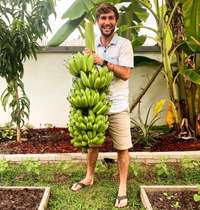
Figure 6. A banana bunch cut off the parent plant with stalk left for a harvester to grip. Source: Brittaney Trail
Banana
Clusters of banana fruit, called hands, form as a bunch on a stalk supported by a pseudostem that consists of layers of leaf tissue and serves as a trunk (Crane and Balerdi, 2020). For tall varieties, slash into the pseudostem about halfway to make it easy to bend it downwards, bringing the banana bunch within reach (Morton, 1987). Use a curved knife to cut the bunch from the pseudostem, leaving 15 to 18 cm of stalk (portion closest to the pseudostem) for harvesters to hold (Figure 6) while carrying bunches of bananas out of the field. If not already removed, cut off the flower and any stalk on the lower (flower) end of the bunch.
Mango
Mango fruit within reach can be harvested by hand. Fruit out of reach from the ground will need to be harvested using ladders or poles. To avoid impact injury and contamination with disease organisms, do not allow fruit to fall to the ground. Some poles are equipped with a collection net or mechanism to cut and grasp the fruit stems for lowering fruit gently into harvest containers (Motis, 2019; Arndt and Kahl, 2017). Picking poles without nets or holding mechanisms can be used to pull fruit down from the tree, with helpers on the ground catching the fruit into a tarp or net before they reach the ground (Lyaga et al., 2019). Similar tools can be used for harvesting avocados.
Harvested mangoes exude sap from the stem end of the fruit. The sap can cause unsightly spotting and discoloration of the fruit.Two ways to minimize sap burn are 1) to clip the stem above the fruit, leaving about 1 to 2 cm of stem on the fruit and 2) to invert the fruit, with the stem end oriented downwards, until sap leakage slows.
Papaya
Papaya fruit have thin skin susceptible to abrasions and punctures. Skin injuries lead to green blemishes (that remain when the fruit is ripe), weight loss, and disease infection (Quintana and Paull, 1993; Sugano et al., 2013). A poster by Sugano et al. (2013) illustrates the following techniques to minimize papaya fruit damage:
- Use both hands when harvesting a fruit, to keep the fruit being harvested from rubbing against remaining fruit on the tree.
- Wear clean gloves to avoid fingernail damage and buildup of dried sap.
- Trim fruit stems before putting fruit into harvest containers.
- Remove dried sap and soil particles from fruit and harvest containers; this can be done by cleaning with a moist cloth.
- Line harvest bins with material like foam, newspaper, or cardboard.
- Place fruit into harvest containers with the stem ends facing downwards. This minimizes blemishing caused by sap leaking out of cut stems.
- Cover the bins with a blanket to shade the fruit and minimize abrasions during transport.
Papaya fruit are easiest to harvest while they can be reached without having to use a ladder or pole. When using a pole to harvest fruit from tall trees, catch the fruit by hand or in a net to avoid letting the fruit hit the ground.
Starfruit
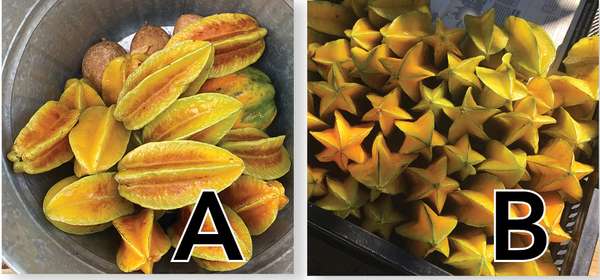
Figure 7. Starfruit with browned ribs (A) and proper arrangement of starfruit in a crate lined with newspaper (B). Source: Danielle Flood (A) and Ashley Dawson (B)
With their thin skin, starfruit are easily damaged under windy conditions, as movement of the canopy causes fruit to rub against branches or other fruit (Nakasone and Paull, 1999). Barriers such as windbreaks (rows of trees) or other fruit trees mitigate against wind damage.
NGMC (2004) highlighted the importance of careful handling to minimize damage and subsequent browning of the ribs of starfruit (Figure 7A). They suggest placing fruit into boxes instead of sacks, as friction between fruit is greater in sacks than boxes. To minimize bruising they also suggested placing paper between layers of fruit, in harvest containers lined with cushioning material such as paper or foam. Arrange fruit in containers vertically with shoulders facing down (Figure 7B).
Tomato
Protecting tomatoes from heat damage is important. Harvest when the air temperature is close to 20°C, which will likely be in the morning or evening (Arah et al., 2015). In parts of Africa, farmers arrange with buyers to come to the field on the day of harvest (Saran et al., 2012). Many of these farmers keep harvested tomatoes under tree shade until buyers come. Depending on how long fruit stay under a tree, they may be exposed to direct sun as the position of the sun changes during the day. For keeping tomatoes in the field before buyers come, Njume et al. (2020) suggest building a shade structure using heat-reflecting material like palm fronds. If you are utilizing containers for storing or transporting tomatoes, arrange individual fruit in containers with shoulders facing downward and do not stack more than a few layers in one container.
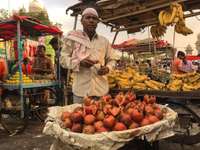
Figure 8. Fruit-filled container lined with newspaper. Source: Patrick Trail
Concluding thoughts
Some solutions to postharvest loss, such as refrigerated storage and transport, are out of reach for many individual small-scale farmers. There are ways, however, to reduce loss of produce that do not involve expensive technologies. Harvesting at the right time (see EDN 154) and careful handling are examples of practices that anyone can implement.
Careful handling may be easier with factory-made harvest containers such as plastic buckets or crates instead of baskets. Farmers unable to obtain such items can still take steps to reduce fruit damage at harvest. Rough edges of baskets, for example, can be softened by lining the inside with cushioning material of some kind (Figure 8).
Harvesters may not realize that fruit injury is occurring if the damage to produce is not visible during harvest. Awareness leads to best harvest practices that farmers can implement, training helpers as needed.
Cite As:
Motis, T. 2022. Extending Postharvest Life of Fresh Fruit: Harvest for Quality. ECHO Development Notes no. 156.
References
Arah, I.K. E.K. Kumah, E.K. Anku, and H. Amaglo. 2015. An overview of post-harvest losses in tomato production in Africa: Causes and possible prevention strategies. Journal of Biology, Agriculture, and Healthcare Vol 5, no. 16.
Arndt, C. and H. Kahl. 2017. Selective harvest of mango. JFP films. An Access Agriculture training video.
Crane, J.H. and C. F. Balerdi. 2020. Banana growing in the Florida home landscape. Publication #HS10. Horticultural Sciences Department, University of Florida/Institute of Food and Agricultural Sciences.
FAO (Food and Agriculture Organization). 1989. Prevention of post-harvest food losses: fruits, vegetables and root crops. FAO Training Series: no. 17/2.
Hussein, Z., O.A. Fawole, and U.L. Opara. 2020. Harvest and postharvest factors affecting bruise damage of fresh fruits. Horticultural Plant Journal 6(1):1-13.
Kitinoja, L. and A.A. Kader. 2015. Small-scale postharvest handling practices: a manual for horticultural crops (5th edition). Postharvest Horticultural Series No. 8E. University of California, Davis. Postharvest Technology Research and Information Center.
Lyaga, M. C. Kimani, and E. Fadhili. 2019. Proper handling of mango at harvest. Biovision Africa Trust. An Access Agriculture fact sheet with link to a training video.
McColloch, L.P.1962. Bruising injury of tomatoes. United States Department of Agriculture. Agricultural Marketing Research Report no. 513.
Morton, J.F. 1987. Fruits of Warm Climates. Oregon: Wipf and Stock Publishers.
Motis, T. 2019. Techniques to boost plants’ stress tolerance and extend fruit marketability. ECHO Development Notes no. 143.
Nakasone, H.Y. and R.E. Paull. 1999. Tropical Fruits. Crop Production Science in Horticulture Series, CAB International.
NGMC (New Guyana Marketing Corporation). 2004. Carambola (Five Fingers): Postharvest care and market preparation. Technical Bulletin no. 30. Ministry of Fisheries, Crops and Livestock, NGMC, and National Agricultural Research Institute.
Njume, C.A., C. Ngosong, C.Y. Krah, and S. Mardjan. 2020. Tomato food value chain: managing postharvest losses in Cameroon. IOP Conf. Series: Earth and Environmental Science 542 (2020) 012021.
Quintana, M.E.G. and R.E. Paull. 1993. Mechanical injury during postharvest handling of “Solo” papaya fruit. Journal of the American Society for Horticultural Science 118:618-622.
Saran, S, S.K. Roy, and L. Kitinoja. 2012. Appropriate postharvest technologies for small scale horticultural farmers and marketers in sub-Saharan Africa and South Asia – Part 2. Field trial results and identification of research needs for selected crops. Acta Horticulturae 934:41-52.
Sargent, S.A., M.A. Ritenour, J.K. Brecht, and J.A. Bartz. 2007. Handling, cooling and sanitation techniques for maintaining postharvest quality. HS719 University of Florida Cooperative Extension Service, Institute of Food and Agricultural Sciences, EDIS.
Sugano J., M. Diaz-Lyke, R. Hamasaki, S. Fukuda, R. Paull, and S. Nakamoto. 2013. How to Minimize On-Farm Papaya Fruit Damage (poster). Honolulu (HI): University of Hawaii. 1 p.